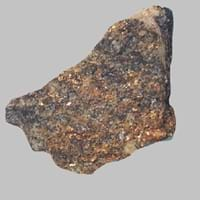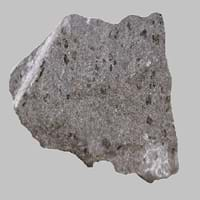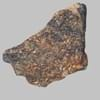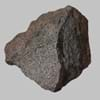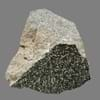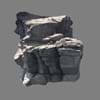Definition
Adakite is an intermediate to felsic volcanic rock that has geochemical characteristics of magma which is said to be formed by partial melting of altered basalt that is subducted below volcanic arcs
Tephrite is an aphanitic to porphyritic textured, volcanic igneous rock
Origin
Adak, Aleutian Islands
Germany
Discoverer
Defant and Drummond
Van Tooren
Etymology
From Adak, Aleutian Islands
From Greek tephra, ashes from Indo-European base, to burn
Class
Igneous Rocks
Igneous Rocks
Sub-Class
Durable Rock, Medium Hardness Rock
Durable Rock, Hard Rock
Other Categories
Fine Grained Rock, Medium Grained Rock, Opaque Rock
Coarse Grained Rock, Fine Grained Rock, Medium Grained Rock, Opaque Rock
Texture
Porphyritic
Aphanitic to Porphyritic
Color
Black, Brown, Light to Dark Grey
Black, Brown, Colourless, Green, Grey, White
Durability
Durable
Durable
Appearance
Dull and Soft
Vesicular
Interior Uses
Decorative Aggregates, Floor Tiles, Homes, Hotels, Kitchens
Decorative Aggregates, Flooring, Homes, Interior Decoration
Exterior Uses
As Building Stone, As Facing Stone, Office Buildings
As Building Stone, As Facing Stone, Garden Decoration, Office Buildings
Other Architectural Uses
Whetstones
Curbing
Construction Industry
As Dimension Stone, Cobblestones, Rail Track Ballast, Roadstone
Landscaping
Medical Industry
Not Yet Used
Not Yet Used
Antiquity Uses
Monuments, Sculpture, Small Figurines
Artifacts, Sculpture
Commercial Uses
Commemorative Tablets, Pottery, Used in aquariums
Production of Lime, Soil Conditioner
Types
Not Available
Not Available
Features
Has High structural resistance against erosion and climate, Host rock for Diamond, Very fine grained rock
Host Rock for Lead
Archaeological Significance
Monuments
Used
Not Yet Used
Famous Monuments
Data Not Available
Not Applicable
Famous Sculptures
Data Not Available
Data Not Available
Pictographs
Used
Not Used
Petroglyphs
Used
Not Used
Formation
Adakite rocks are formed when the hydrous fluids are released from minerals that break down in metamorphosed basalt, and rise into the mantle they initiate partial melting.
Tephrite is a fine-grained, hard rock which is a type of metasomatite, essentially altered basalt. It forms with or without crystallization, either below the surface as intrusive rocks or on the surface as extrusive rocks.
Mineral Content
Olivine, Plagioclase, Pyroxene
Alkali feldspar, Nepheline, Plagioclase, Pyroxene
Compound Content
Aluminium Oxide, MgO, Silicon Dioxide
CaO, Carbon Dioxide, MgO, Silicon Dioxide
Types of Metamorphism
Cataclastic Metamorphism, Contact Metamorphism, Impact Metamorphism, Regional Metamorphism
Cataclastic Metamorphism, Contact Metamorphism, Impact Metamorphism, Regional Metamorphism
Types of Weathering
Chemical Weathering, Mechanical Weathering
Biological Weathering, Chemical Weathering, Mechanical Weathering
Types of Erosion
Coastal Erosion, Sea Erosion, Water Erosion
Chemical Erosion, Coastal Erosion, Glacier Erosion, Sea Erosion, Water Erosion
Grain Size
Fine to Medium Grained
Medium to Fine Coarse Grained
Fracture
Conchoidal
Uneven
Streak
Bluish Black
Bluish Black
Porosity
Less Porous
Very Less Porous
Luster
Grainy, Pearly and Vitreous
Subvitreous to Dull
Compressive Strength
Not Available
Cleavage
Not Available
Crenulation and Pervasive
Toughness
Not Available
2.4
Specific Gravity
Not Available
2.86
Transparency
Opaque
Opaque
Density
Not Available
2.8-2.9 g/cm3
Specific Heat Capacity
Not Available
Resistance
Heat Resistant, Pressure Resistant, Wear Resistant
Heat Resistant, Impact Resistant
Deposits in Eastern Continents
Asia
India, Russia
Not Yet Found
Africa
Ethiopia, Somalia, South Africa
Namibia, Uganda
Europe
Iceland
Germany, Hungary, Italy, Portugal, Spain
Others
Not Yet Found
Not Yet Found
Deposits in Western Continents
North America
Canada, USA
USA
South America
Brazil
Not Yet Found
Deposits in Oceania Continent
Australia
Not Yet Found
New Zealand, Western Australia
Adakite vs Tephrite Characteristics
Though some rocks look identical, they have certain characteristics which distinguish them from others. Characteristics of rocks include texture, appearance, color, fracture, streak, hardness etc. Adakite vs Tephrite characteristics assist us to distinguish and recognize rocks. Also you can check about Properties of Adakite and Properties of Tephrite. Learn more about Adakite vs Tephrite in the next section. The interior uses of Adakite include Decorative aggregates, Floor tiles, Homes, Hotels and Kitchens whereas the interior uses of Tephrite include Decorative aggregates, Flooring, Homes and Interior decoration. Due to some exceptional properties of Adakite and Tephrite, they have various applications in construction industry. The uses of Adakite in construction industry include As dimension stone, Cobblestones, Rail track ballast, Roadstone and that of Tephrite include Landscaping.
More about Adakite and Tephrite
Here you can know more about Adakite and Tephrite. The life cycle of a rock consists of formation of rock, composition of rock and transformation of rock. The composition of Adakite and Tephrite consists of mineral content and compound content. The mineral content of Adakite includes Olivine, Plagioclase, Pyroxene and mineral content of Tephrite includes Alkali feldspar, Nepheline, Plagioclase, Pyroxene. You can also check out the list of all Igneous Rocks. When we have to compare Adakite vs Tephrite, the texture, color and appearance plays an important role in determining the type of rock. Adakite is available in black, brown, light to dark grey colors whereas, Tephrite is available in black, brown, colourless, green, grey, white colors. Appearance of Adakite is Dull and Soft and that of Tephrite is Vesicular. Properties of rock is another aspect for Adakite vs Tephrite. The hardness of Adakite is 3-4 and that of Tephrite is 6.5. The types of Adakite are Not Available whereas types of Tephrite are Not Available. Streak of rock is the color of powder produced when it is dragged across an unweathered surface. The streak of Adakite and Tephrite is bluish black. The specific heat capacity of Adakite is Not Available and that of Tephrite is 0.92 kJ/Kg K. Depending on the properties like hardness, toughness, specific heat capacity, porosity etc., rocks are resistant to heat, wear, impact, etc.Adakite is heat resistant, pressure resistant, wear resistant whereas Tephrite is heat resistant, impact resistant.
